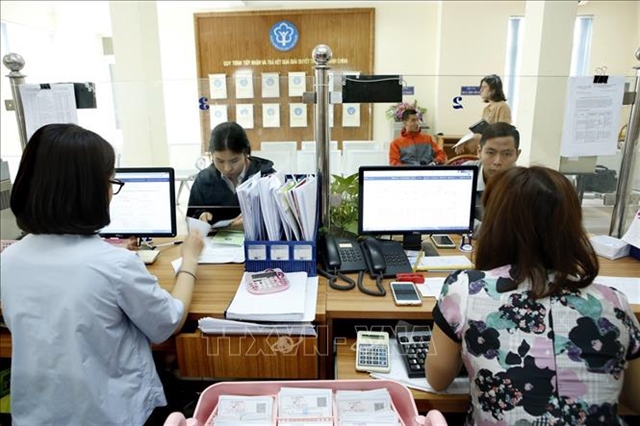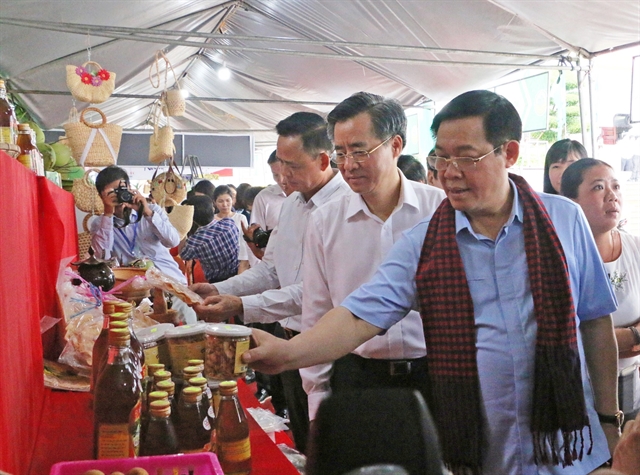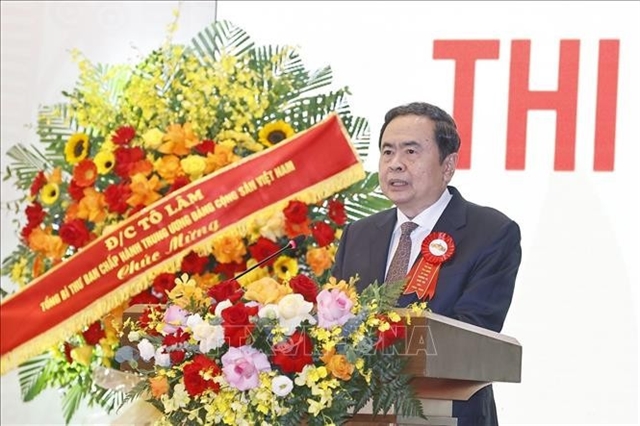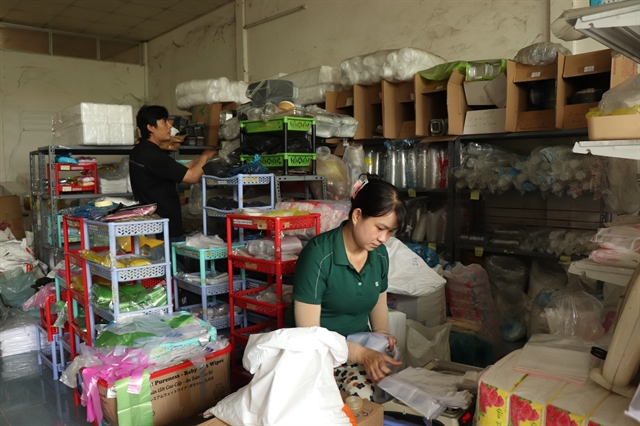 Society
Society


|
| Deputy Prime Minister Vương Đình Huệ visits a booth which displays agricultural products at the conference. — VNA/VNS Photo |
MEKONG DELTA — The southeastern and Cửu Long (Mekong) Delta regions have done well in improving rural areas, but more needs to be done, officials have said.
The regions are building new-style rural areas based on developing a sustainable and safe agricultural sector with high technology and good-quality infrastructure, said Deputy Minister of Agriculture and Rural Development Lê Quốc Doanh.
A delegation of Government officials led by Deputy Prime Minister Vương Đình Huệ had a working session in the Mekong Delta province of Bạc Liêu on Saturday to review almost a decade of running the national target programme on new-style rural area building.
According to a report from Deputy Minister Doanh, since the programme kicked off in 2010, the two regions so far have had 874 communes recognised as new-style rural areas.
Seven out of 19 provinces and cities in the regions, namely Bình Dương, Đồng Nai, Bình Phước, Tiền Giang, An Giang, Kiên Giang and Bạc Liêu, realised the target or reached the target before deadlines.
Đồng Nai and Bình Dương provinces have performed best with all communes recognised as new-style rural areas.
New-style rural areas in southeastern and Mekong Delta regions have met criteria in terms of income, housing and number of households escaping poverty, even performing better than the national average, Doanh said.
However, the performance has not fully reflected potential nor brought into full play the advantages of the regions.
“The infrastructure of the Mekong Delta region, especially transport infrastructure, lacks connection. Agriculture accounts for a large proportion in the regional economic structure but mostly develops on small scale. Farm produce consumption remains unsustainable and has yet to meet demand of big production while regional capacity to adapt to climate change and natural disasters has not been improved. Both the quantity and quality of agricultural co-operatives remain limited,” said Deputy Minister Doanh.
The deputy minister said by 2025, the regions must strengthen inter-regional and trans-regional connection. Infrastructure must be able to adapt to climate change and be safe from natural disasters. Natural resources must be exploited appropriately.
The new-style rural areas must also preserve their cultural and historical values and improve the lives of local people, he said.
Professor Trần Đức Viên, from Việt Nam National University of Agriculture, member of science and technology programme on building new-style rural areas, said building new-style rural areas continues to play a key role in national development. Farmer, agriculture and rural area development are core parts of growth model innovation and national economic restructuring.
Deputy Prime Minister Vương Đình Huệ, chairman of the central steering committee on the national target programme on new-style rural area building, acknowledged results achieved by southeastern and Mekong Delta localities in production and rural labour structure.
The deputy PM urged local authorities to review their performance, address shortcomings and continue to apply good models in practice.
Localities must put people at the core of new-style rural area building, he said.
He added that the localities must not be satisfied with their good results and must focus on the quality of the programme.
The national target programme on new-style rural area building, launched by the Government in 2010, sets out 19 criteria for building new-style rural areas such as planning, transportation, electricity, irrigation, healthcare, culture, education, environment and social order. — VNS




